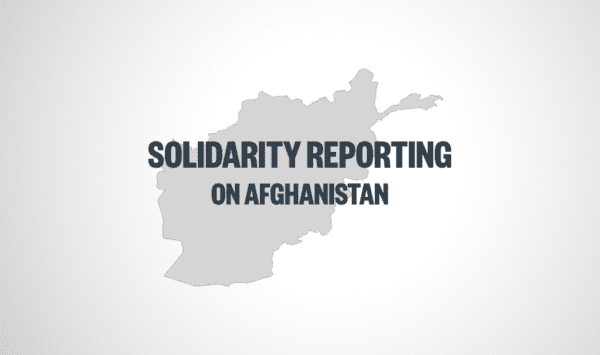
When the US military withdrew from Afghanistan and the Taliban returned to power, social media posts and news coverage about Afghan people quickly grew. Debates began to unfold over what solidarity means after a 20-year war, and over what Afghan people want, need, and deserve. Noticeably absent from most of the discourse featured on prominent news shows and viral tweets? Afghan people speaking for themselves.
As a rapid response to unfolding and uncertain conditions in Afghanistan, Solidarity Journalism Initiative lead and assistant professor Anita Varma and Emerson College assistant professor Azeta Hatef collaborated on a virtual solidarity reporting workshop open to journalists, journalism students, and journalism educators.
Background
“All too often, coverage of marginalized people perpetuates marginalization by turning to officials, outside experts, and analysts instead of the people who are actually living the issue at hand,” Varma said. “In the case of mid-August coverage of Afghanistan, there was often a disproportionate focus on military officials and the Biden administration, instead of accounting for on-the-ground lived conditions.”
This sidelining of Afghan people’s perspectives is far from new. Hatef’s research provides evidence that US media representing Afghanistan and Afghan women in terms of military interventionism far pre-dates 2021.
“Our research found three points of heightened coverage of Afghan women in The New York Times over a 17-year span,” said Hatef. “These peaks in coverage also correspond with military decisions including the US-led invasion in 2001 under President Bush, in 2010 when President Obama increased the number of troops in Afghanistan, and President Trump’s decision to keep troops in the country in 2017. The focus on women in this coverage was framed as justification for invasion and ongoing presence in the county.”
Key Workshop Questions
- What does dignity mean for Afghan people right now? Who decides?
- How might journalists represent Afghan people without dehumanizing or tokenizing them?
- Who should journalists talk to, and what should journalists ask sources in interviews?
Workshop Discussion
Guiding participants on best practices for coverage, Varma summarized the solidarity reporting framework developed by drawing on strong approaches to covering marginalized people accurately.
“If someone wanted to understand your life, would you tell them to talk to your elected representative? Probably not – you know your life and your struggles best. Solidarity reporting applies that logic to journalism and calls on journalists to start with people who know because they are living it,” Varma explained during the workshop.
Drawing on her research, Hatef spoke about media and intervention, the war on terror and the Other, and the ethics of publishing graphic images involving Afghan death.
Anticipating that departing US military interests may also lead to Afghanistan becoming invisible again in news coverage, Hatef noted that the humanitarian crisis will be ongoing and deserves continued attention by centering Afghan voices.
“Unfortunately, we know that when US military interests dissipate, so does news coverage,” Hatef said. “We have a responsibility to Afghan people and to the rest of the world to continue reporting accurately on the US war and withdrawal from Afghanistan.”
Slides shared during the workshop are publicly available: “Solidarity Reporting on Afghanistan: Resisting Dehumanizing Portrayals”
The Solidarity Journalism Initiative offers free workshops, 1:1 consultations, and resources for reporters, journalism students, and journalism educators. To learn more, please visit our Solidarity Journalism page or contact anita.varma@austin.utexas.edu.
Related links:
Solidarity with Afghan women: help Rukshana stay on the story
Anita Varma Interviewed on WBAI by The Indypendent
Want to support accurate journalism? Fund solidarity reporting.
Media and Intervention: Examining Representations of Afghan Women in The New York Times


